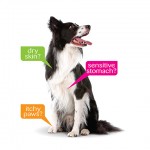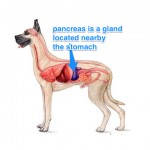What is Xylitol?
The artificial sweetener xylitol is a sugar alcohol extracted from corn, birch, raspberries and plums. Often consumed by diabetics and people on low carbohydrate diets, xylitol is gaining popularity as a sugar substitute. Xylitol is toxic to dogs.
Xylitol is used to sweeten the following:
- Sugar-free gum, mints and other candy
- Nicotine gum
- Certain prescription drugs
- Dental hygiene products
- Baked goods
Xylitol is also:
- Available in granulated form as a sugar replacement to sweeten beverages and other foods.
- Now being added to some human vitamins (including chewable vitamins) and certain prescription drugs, including pediatric elixirs that were once considered safe for dogs.
Why is it toxic?
When ingested orally, humans absorb xylitol slowly from about 50% to 95%. Dogs, however, absorb
xylitol rapidly and completely within approximately 30 minutes to 60 minutes of ingestion. Insulin
secretion can markedly increase when dogs consume xylitol and can result in severe hypoglycaemia (a
low blood sugar). For example, one or two pieces of gum containing xylitol can cause hypoglycaemia in a
10kg dog (0.1g/kg).
When do I know my dog has ingested xylitol?
Symptoms (signs of toxicity) may not appear immediately such that your dog may be fine for up to a day
after ingesting xylitol—only to develop liver failure afterwards. Liver biochemistry values can increase
within 8-12 hours of exposure to xylitol. Ingesting amounts above 0.5 g/kg can cause acute liver failure
and death from hepatic necrosis (death of liver cells). For this reason, if symptoms of toxicity do not
appear immediately following ingestion of xylitol, it is very important that you do not assume your dog
is safe. Currently, the cause of xylitol-related liver failure is not well understood. Scientists suspect xylitol
and its metabolites deplete adenosine triphosphate, a nucleotide that is a major source of energy for
cellular reactions. Without sufficient amounts of adenosine triphosphate, cells in the liver die off.
What are the symptoms?
Symptoms of xylitol intoxication include:
• Vomiting
• Weakness
• Lethargy
• Loss of coordination
• Collapse
• Seizures
If your dog is showing symptoms of xylitol intoxication, seek immediate veterinary care. Given that it is difficult to determine the quantity of xylitol contained in a particular product, it is recommended that people avoid giving their dogs products containing xylitol and/or consult with their veterinarian prior to using any product that lists xylitol as an ingredient.
What can I do to prevent my dog from ingesting xylitol?
Inspect the labels on the products listed below for xylitol and, as with all products that are potentially harmful to dogs, store these products safely out of reach from your dog:
- Any sugar-free gum, candy or processed food
- Oral hygiene products (toothpaste, mouth rinse, teeth whiteners, etc.)
- OTC medications (over-the-counter medications) and supplements such as, but not limited to, chewable vitamins.
- Prescriptions, particularly liquid medications
- Whenever you have visitors in your home, take the necessary precautions to avoid having your dog get into your guests’ medications, handbags, etc. Also, inform your guests that xylitol is toxic to dogs so that they do not leave any products containing xylitol lying around the house.
- During walks, train your dog to not eat any food, candy or gum found on the ground











